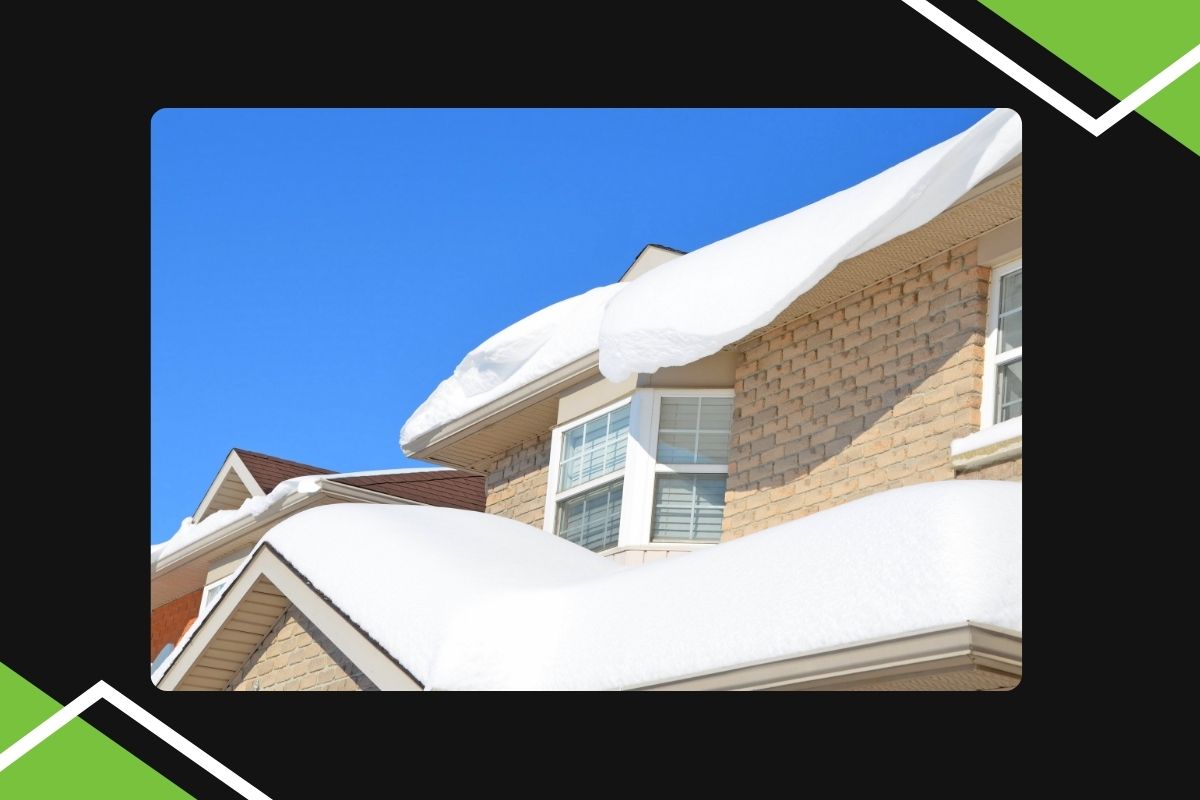As winter blankets the landscape with snow, the picturesque scenery often comes with a hidden danger for homeowners – the accumulation of snow on your roof. While a snowy rooftop can be a charming sight, it can also lead to potential structural damage if not properly managed. In this blog, we’ll explore the importance of roof snow removal and provide you with essential tips on how to prevent damage to your home during the winter season.
Understanding the Risks
While the sight of freshly fallen snow blanketing your home can be picturesque, it can also conceal a range of potential risks when it accumulates on your roof. It’s crucial to delve deeper into these risks to appreciate the importance of effectively managing and, if necessary, removing snow from your roof during the winter season. Here, we’ll further explore the potential hazards associated with excessive snow buildup:
Weight Load
One of the most significant dangers posed by a snow-covered roof is the substantial weight it can add. Snow is deceptively heavy, and when it accumulates, it exerts tremendous pressure on the structure of your roof.Over time, this load can exceed the roof’s weight-bearing capacity, leading to structural damage. In extreme cases, the excess weight may even result in a catastrophic roof collapse, endangering the safety of your home’s occupants and causing extensive property damage.
Ice Dams
The winter weather cycle often leads to the melting and refreezing of snow on your roof’s surface. This repeated thawing and freezing action can give rise to the formation of ice dams along the edges of your roof. These ice dams are problematic for several reasons.Firstly, they block the natural flow of melting snow, preventing proper drainage. Secondly, as ice accumulates, it can seep under roofing materials, leading to water infiltration into your home. This moisture intrusion can result in costly interior damage, including compromised ceilings, walls, and insulation. Additionally, prolonged exposure to moisture can create ideal conditions for mold growth within your home, posing health risks to occupants.
Gutter Damage
The weight of snow and ice on your roof can extend to your gutters, particularly if they become clogged with snow or ice. The added stress can cause your gutters to sag or detach from the roofline, leading to leaks and drainage problems.Gutters play a critical role in redirecting rainwater away from your home’s foundation, so any damage or blockages can result in water-related issues, including foundation damage, basement flooding, and erosion around your property.
Now that we understand the potential risks, let’s explore how to prevent structural damage to your home by safely removing snow from your roof.
Safety First
Safety should always be the top priority when it comes to removing snow from your roof. Whether you’re a seasoned DIY enthusiast or considering professional help, the inherent risks of working at heights in icy conditions demand vigilant precautions. Begin by assessing your own skills and comfort level, seeking assistance if needed.
Proper safety gear, including non-slip boots, a secure harness, and insulated clothing, is essential. Choose the right tools designed for the task to minimize damage risks. Never go on the roof alone; having a spotter on the ground is crucial. Secure your ladder, be cautious of icy patches, and closely monitor weather conditions for any sudden changes.
By prioritizing safety, you ensure that snow removal becomes a task that not only protects your home but also keeps you and those assisting you out of harm’s way.
Tools of the Trade
Choosing the right tools for snow removal from your roof is paramount. Specialized equipment such as roof rakes and snow blowers designed for this purpose ensures effective snow removal while minimizing the risk of damage to your roof’s surface.
Using improper tools like sharp implements or regular shovels can not only damage your roof but also pose a safety hazard. Investing in the right equipment ensures a safe and efficient snow removal process while preserving the integrity of your home.
Remove Snow Strategically
When removing snow from your roof, it’s essential to have a strategic approach to minimize risks and protect your property. Start by clearing the snow from the roof’s edges and gutters where ice dams are prone to form. This preventive step helps maintain proper drainage and prevents potential water damage.
Work your way up the roof using a gentle, downward motion to avoid scraping or damaging the shingles. Be cautious not to forcefully remove snow, as this can harm both your roof and the tools you’re using.
Prevent Ice Dams
To prevent ice dams, consider installing heating cables or ice melt systems on your roof. Proper insulation and attic ventilation can also help regulate temperatures on your roof, reducing the risk of ice dam formation.
Professional Help
If the snow buildup is substantial or your roof is particularly steep, it’s wise to enlist the services of a professional roofing company or snow removal service. They have the experience and equipment to safely and efficiently remove snow without causing damage.
Regular Maintenance
Regularly inspect your roof for signs of snow accumulation. The earlier you address the issue, the easier it is to manage and prevent damage.
Key Takeaways
Roof snow removal is an essential aspect of winter home maintenance that helps prevent structural damage and potential costly repairs. By understanding the risks, investing in the right tools, and practicing safety measures, you can effectively manage snow buildup on your roof.
Remember that when in doubt, it’s better to seek professional assistance to ensure the safety and integrity of your home during the winter season. Don’t let a snowy rooftop turn into a hazard – take proactive steps to protect your home.
